Armor was an important war material in the cold weapon era, and its quality and quantity were crucial to the combat power of ancient armies and the rule of feudal dynasties.
The Chinese emperors paid attention to improving the ability and quality of armor manufacturing, but also strictly controlled the private possession of armor by strict penalties and laws. During the Song and Yuan dynasties, this restriction was even stricter, and those who hid the whole set of armor privately would be regarded as having conspiracy to commit rebellion to be executed.
The armor could only be handed out during the war and collected into the national treasury after the war. These military treasures were eventually destroyed and lost during the war between the dynasties, so except for a few surviving artifacts from the late Qing Dynasty that have been preserved as cultural relics, the rest of the dynasties have rarely survived to this day.
However, after the death of the royal family and the senior military class, armor could be buried in the burial chamber as burial goods. For example, the Qin Dynasty, the images of armor portrayed on the terracotta warriors and the stone armor excavated from the burial pits of Qin Shihuang's tomb give us a clear understanding of the types and forms of armor in the Qin Dynasty.
And the armor remnants and fragments unearthed from the tombs of Zhou Dynasty, Wei Jin, North and South Dynasties, Tang, Song, Yuan and Ming, combined with the images of other related cultural relics from these eras, can also give us a general outline of the face of armor in all generations.
Scholars devoted to the study of ancient Chinese armor have studied it at the basic level of material, manufacturing technology, and form. At the same time, they also have to take into account the development of weapons, the transformation of warfare forms, and even the changes in clothing fashions and social customs.
The ancient Chinese armor - Kai Jia
Kai Jia (铠甲, armor) is the combined name of Kai (铠) and Jia (甲) in ancient times.
In the pre-Qin period, there was only Jia but no Kai. Jia was mainly made of leather. After the Qin and Han dynasties, iron armor became popular and was called Kai.
This change of name seems to reflect the distinction of the ancient people on the material of armor, but in the pre-Qin dynasty, there was not only leather armor, but also armor made of bronze, and there was a kind of armor combination of leather and bronze.
Therefore, the armor made of leather only is called Jia, the armor made of pure metal is called Kai, and the armor made of mixed materials is called Kai Jia most appropriately.
Chinese Armor in Pre-Qin Period
The main forms of warfare in the pre-Qin period were infantry warfare and chariot warfare.
In the Shang and Western Zhou dynasties, the army was dominated by infantry, only the generals could fight in vehicles. In the Spring and Autumn period, especially in the middle and late Warring States period, the scale of chariot warfare became larger and larger. In such a combat context, the armor form was mainly Pi Gua (披挂式, draped and hanging) type, divided into two kinds of single piece type and top type.
Pi Gua type armor - single piece type
The single piece type is only for chest protection, and the most primitive one is the relic of leather armor unearthed in 1935 from the tomb of Houjiazhuang 1004 in Anyang, Henan Province, but this is only seen in accounts and illustrations.
Another case is the 42 pieces of bronze armor excavated from the Western Zhou tomb in Pudu Village, Chang'an, Shaanxi Province, which was recovered as a single piece of armor about 30 cm wide and 55 cm long, and could be used to protect the chest and abdomen.
This piece of armor is used in the method of braiding the four corners together, which belongs to the original Chinese armor-making technology. The single-piece armor was still in use in the Qin Dynasty.
Pi Gua type armor - top type
The top type armor is shaped like a short-sleeved top, most of them are long to the waist, and there are generally three or four rows of movable pendant armor to protect the abdomen.
As for the sleeve part, there are barrel-shaped, and piece-shaped, hanging on the shoulder and arm. The placket is mostly right side placket in the pre-Qin period, and the front placket is available in the Han Dynasty.
The top type armor was popular during the Spring, Autumn, and Warring States period. There was one unearthed in Suixian, Hubei. The armor body is made of large pieces of armor, and the front and back parts are woven and fixed, and the top and bottom are hung with silk threads, and the armor pieces are overlapped with each other.
There is a vertical collar at the collar part of the armor. The sleeves are made up of small pieces of armor, and are made of several layers of cowhide laminated together, and the surface is lacquered.
The Pi Gua type armor was worn looser on the body and did not cling to the body, this was due to the larger size of the armor pieces, too tight and too close to the body could easily affect the movement of the soldier. Such armor was a completely effective protective equipment in the era of warfare based on infantry, chariot warfare, and bronze weapons.
Iron armor
In the late Warring States period, iron armor emerged, and the early iron armor still basically continued the manufacturing method and shape of leather armor.
In the Qin Shi Huang Terracotta Army armor, can probably distinguish the material of the armor, such as the armor pieces on the archer, cavalry, rider figurines are the larger, and the length to the waist.
And from the general terracotta, military officials terracotta body, chest and back below, the thin and small armor, can be inferred as the iron armor, especially the wide edge of the perimeter of the armor, which can be used as the biggest feature that is different from the leather armor.
The excavated object of leather armor has not been found so far with the remains of the lining, while the Warring States and the Western Han Dynasty, numerous iron armor, when excavated, have obvious lining leather or cloth string residue.
The most famous and has been restored is the gold and silver ornamental armor of the tomb of King Qi in Zibo, Shandong Province, and the iron armor of Liu Shengji in Mancheng, Hebei Province.
The gold and silver ornamental armor is decorated with gold and silver flakes on the surface of the armor, while the Liu Shengji iron armor retains more complete traces of leather, silk double lining, and edge wrapping, and can clearly identify the weave pattern and sewing method.
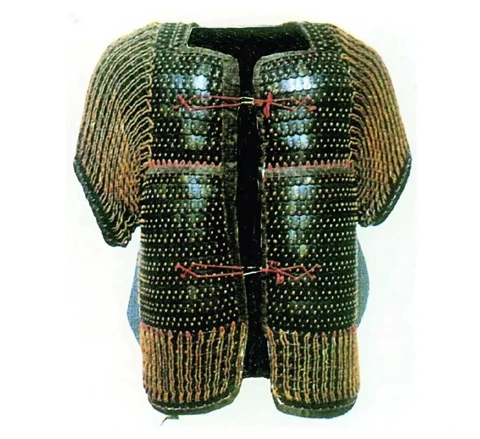
gold and silver ornamental armor
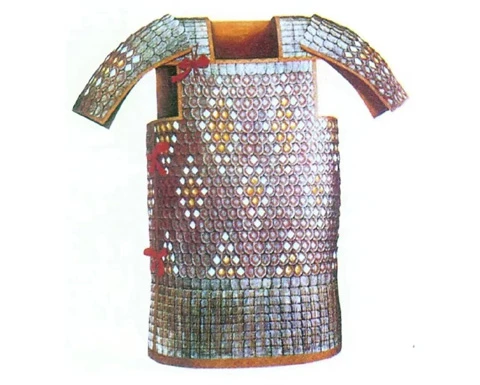
iron armor
After the Eastern Han Dynasty, with the political reform of the funeral system, the case of armor as burial goods has basically disappeared.
The Pi Gua type armor from leather armor transition to iron armor, armor piece smaller and smaller, and embellishments finer, but the basic form has not been a fundamental change, this phenomenon continued in the Wei Jin, North, and South Dynasties.
Stirrup
During the Wei and Jin dynasties, a small invention with great influence came into use: the stirrup.
A single stirrup of a thin sheet type was unearthed from a tomb of the Western Jin Dynasty in Anyang, Henan. It can be inferred that in the early period, stirrups were only used for treading when mounting a horse and were set aside after riding.
However, a pair of stirrups was unearthed from another Western Jin tomb in Chaoyang, Liaoning Province, indicating that the transition from a single to a double stirrup was a short and that people quickly appreciated the wonderful effects of the double stirrup.
This actually contributed to the rapid development of cavalry. Cavalry, with its outstanding advantages such as efficiency in rapid maneuver and low requirements for battlefield geography, quickly replaced infantry and chariot fighting and transposed the assault power generated by chariot armies to cavalry combat by equipping the warhorse with iron armor as well.
The higher demands on armor as cavalry became the mainstay of combat were first manifested in the enhanced protection of the legs.
In the era of lack of stirrups, mounting a horse mainly relied on jumping, and any move to increase the weight of armor was foolish, and armor could only be used for the most vital parts that endangered life.
With the popularity of stirrups, the safety of the legs was a matter of whether the hands could maximize the force of the weapon in combat, so the protection of the legs became very important, and a new part of armor appeared, Tui Qun (腿裙) for leg protection. This marked the development of armor into the stage of two-piece suit.
Chinese Armor in Tang Dynasty
Pi Guo type armor
Although heavy armor cavalry flourished for a while, it soon came to an end because of the damage it caused to social productivity and natural ecological resources.
At the end of the Sui Dynasty and the beginning of the Tang Dynasty, the light cavalry assault tactics implemented by Li Shimin replaced the heavy cavalry, and the heavy cavalry began to withdraw rapidly from the battlefield.
During the Southern Song Dynasty, the Jin soldiers returned to the use of heavy armor, but they were eventually defeated, and from then on heavy armor cavalry existed only as a military honor guard and occasional royal ceremonial items.
In the era of light cavalry, relying on advanced saddles and weapons, the new tactics of high speed and agility of cavalry prompted the quality of armor to be further improved, thus giving rise to a new type of Pi Guo (披裹式) type armor. Unfortunately, there is no physical basis for interpreting this type of armor, only through paintings, sculptures, figurines and statues to recognize it.
Ming Guang Jia
The representative of Pi Guo type armor is Ming Guang Jia (明光甲) armor, which appeared in the North and South Dynasties and became popular in the Tang Dynasty.
The characteristics of this kind of armor is that the whole body armor is divided into the front and back two pieces, with two belt buckle joint and hanging on the shoulders.
The front piece of chest armor drops down and connects to the abdominal armor, and the abdominal armor spreads to the two ribs on the left and right sides, while the back piece armor drops down and connects to the hip armor, and both sides also spread to connect to the Tui Qun to the armpit.
When wearing, wrap the Tui Qun piece from the back to the front around the abdominal armor, and buckle at the abdomen. The shoulder protection is worn in the shoulder position within the breastplate. The shoulder protection is provided with a leather or metal collar, with a round hook at both ends. The shoulder protection is usually studded with thick iron shoulder armor in the shape of a beast's head or dragon's head, sometimes with short Pi Bo (披膊, the armor part of the upper limb near the shoulder) hanging from the shoulders.
Pi Guo type armor needs to tie after wearing: one at the waist, tied with a belt; the other at the chest, usually with a silk rope or belt hanging in front of the collar on the round hook.
The gold-painted terracotta warriors unearthed from the Tang dynasty tomb of Zheng Rentai in Liquan County, Shaanxi province, have accurately depicted the wearing and binding of Ming Guang Jia.
The Tui Qun of Ming Guang Jia is shorter, accordingly crus ministry matches Qiang Jia (腔甲) commonly. Although Qiang Jia has appeared in the Warring States period, but rarely used until the Tang dynasty to popularize.
The Pi Bo of Ming Guang Jia was often replaced by a shoulder armor, a thick piece of armor that became popular after the Southern and Northern dynasties, especially with the emergence of the Tang dynasty's new chopping weapons.
Pi Guo type armor is becomes very tight after binding, so the requirement for different pieces of armor is higher. Armor pieces are often made of many different shapes and sizes to adapt the flexible movement of the human body parts need. A Dunhuang Heavenly King silk painting collect in The British Museum paints a clear picture of this phenomenon.
Chinese Armor in Northern Song Dynasty
At the end of the Tang Dynasty, Ming Guang Jia declined and was replaced by a two-piece armor.
In fact, after the appearance of the Tui Qun, the Chinese armor was naturally formed into a two-piece with a top and a bottom, and it was necessary to put the Tui Qun on the waist before putting on the top armor.
The Tui Qun and body armor in the Northern Song Dynasty became one whole. Pi Bo was separated from the body armor and designed as a shoulder armor that combines a shoulder protector and a Pi Bo. After becoming such a two-piece suit, the chest and back had a double layer of armor.
The ancient book "Wujing Zongyao (武经总要)" contains illustrations of Song Dynasty armor, which depicts this two-piece suit very clearly. A set of Ming Dynasty iron armor was excavated from a Ming Dynasty site in Guangzhou in 1996, and after restoration, it matched the illustrations of the "Wujing Zongyao".
Although there are no excavated objects of this kind of armor in the Song Dynasty, but its characteristics can be seen in numerous stone carvings, figurines, and painted surface works.
Chinese Armor in Ming and Qing Dynasties
After separating from the body armor, the Tui Qun of the two-piece armor started to be longer, from the initial length to the middle of the calf, to the top of the foot later.
In the Ming Dynasty, it was possible that the Tui Qun was too long and the hooks were installed on the upper part of the Tui Qun armor, so that the lower part of the Tui Qun could be folded and hung to facilitate walking in the armor. This style of armor has been continued from the emergence to the armor out of the stage of history, through the entire development of the second half of ancient Chinese armor.
The form of ancient Chinese armor has changed to a greater or lesser extent in various historical periods, but the basic form of the two-piece set has always remained the same. The main part that has changed is the Pi Bo.
For example, during the Jin Dynasty, the Pi Bo with embedded shoulders became the Da Bi Jia (大臂甲) with two pieces of flat inner mouth and an oval outer edge, with a ring-shaped belt at the two corners of the flat inner edge, which was fixed diagonally into the left and right arms when worn, and the belt exposed at the back of the chest was cross-shaped. Such Pi Bo was used in the Yuan and Ming dynasties.
In the middle and late Ming dynasty, the two-piece suit was also known as the Zhao Jia (罩甲), and the Pi Bo of the Zhao Jia absorbed the elements of Western armor, adopting the structure of Pi Gua type armor sleeves to make iron arms, and tying them on both arms with multiple straps. Iron arm until the early Qing dynasty is still in use Bu Mian Jia was the last generation of armor in ancient China.
Suo Zi Jia & Bu Mian Jia
Since gunpowder was used in large quantities in warfare and the attack surface was wide, it was necessary to expand the covering area of the armor as much as possible to protect effectively, so the light and dexterous Suo Zi Jia (锁子甲) became popular.
The Suo Zi Jia was made of one iron ring that crossed and overlapped each other, and it was extremely soft and light in weight. This kind of armor appeared in the Wei and Jin dynasties, and belonged to the precious armor, to the Yuan dynasty began to use in great quantities.
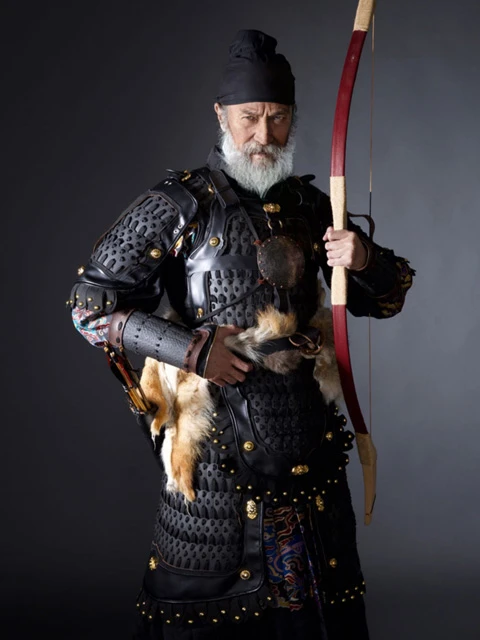
modern armor
Suo Zi Jia can be directly put on the outside of the military uniform, but in order to improve the protective effect, the Yuan and Ming dynasties have used woven material for the lining of the Suo Zi Jia, thus giving rise to the last generation of new armor in export China - Bu Mian Jia (布面甲).
Bu Mian Jia was made by hanging thin iron pieces between the face and lining to form a double layer of protection for the whole piece of armor.
Reference: History of Chinese Costume - Deciphering Ancient Chinese Armor: Liu Yonghua
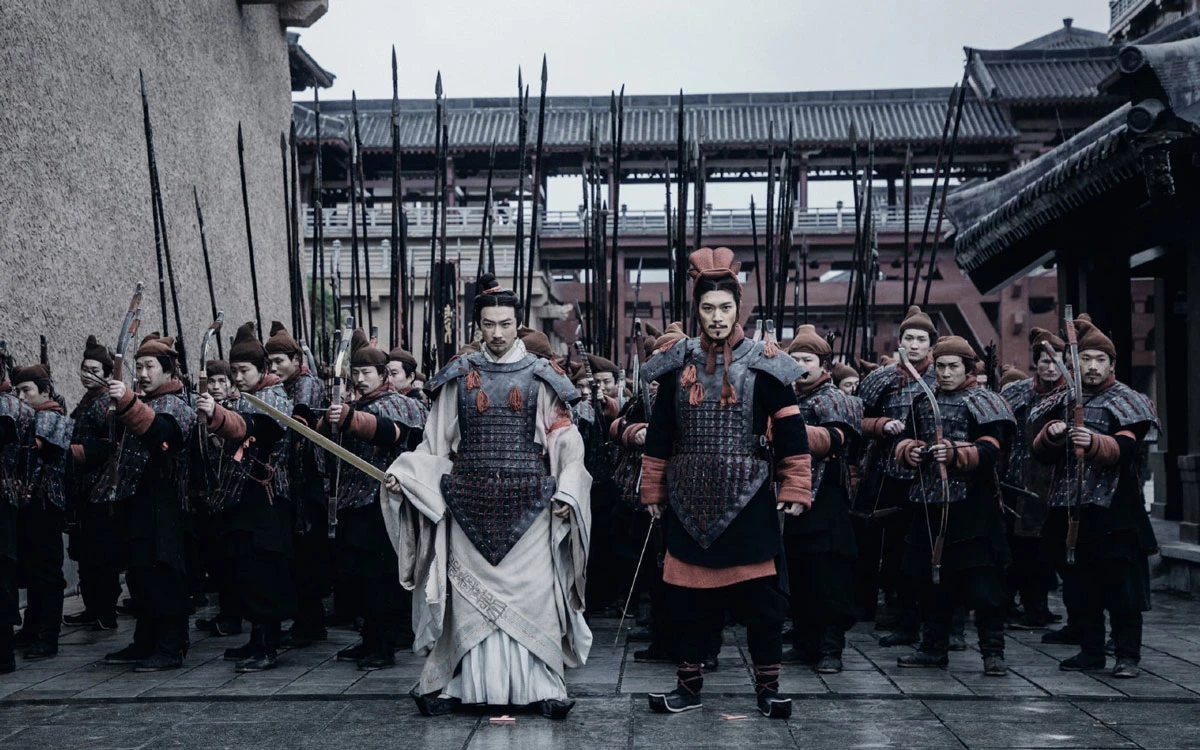
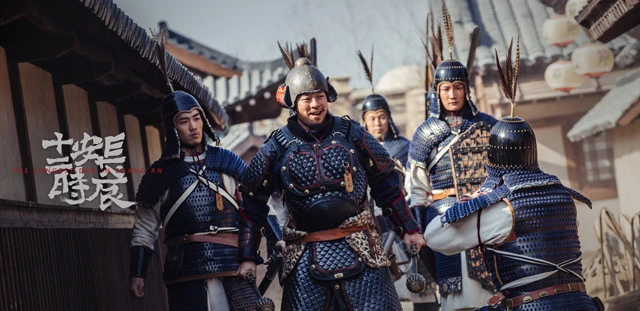


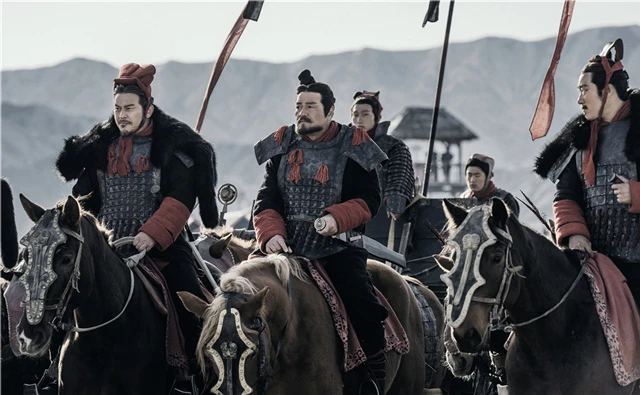

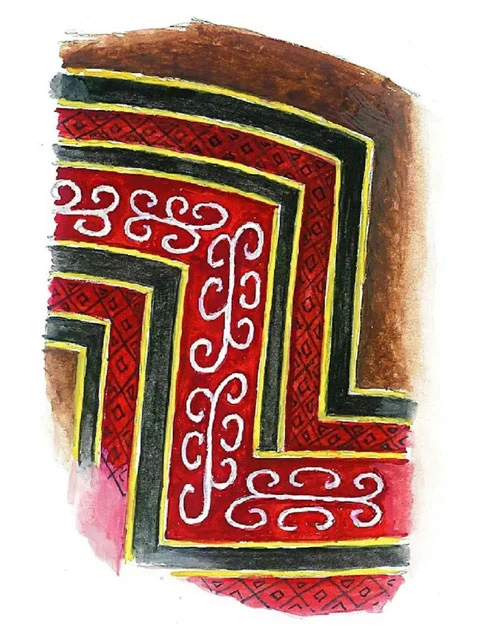
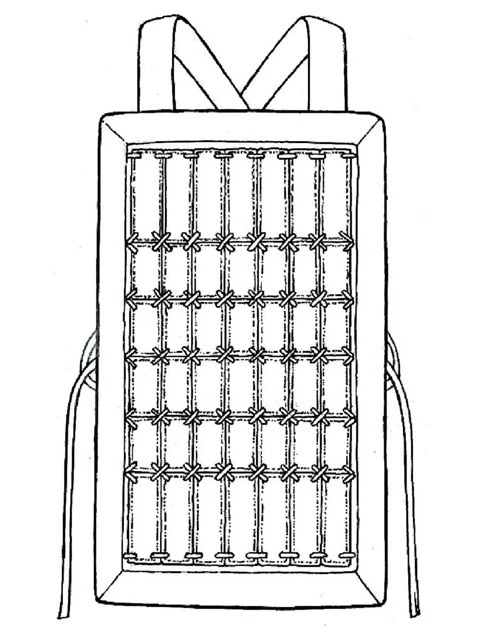
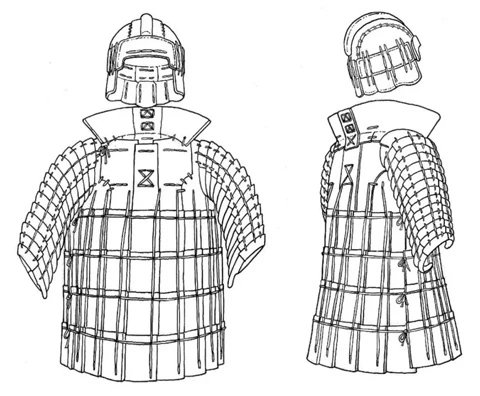
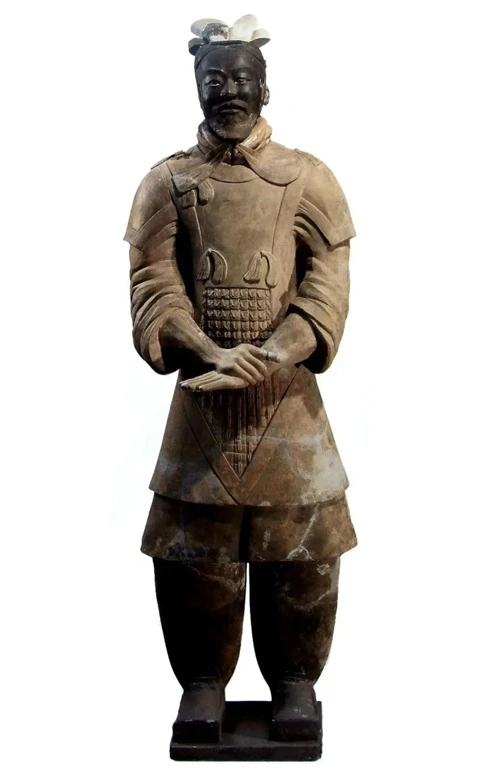
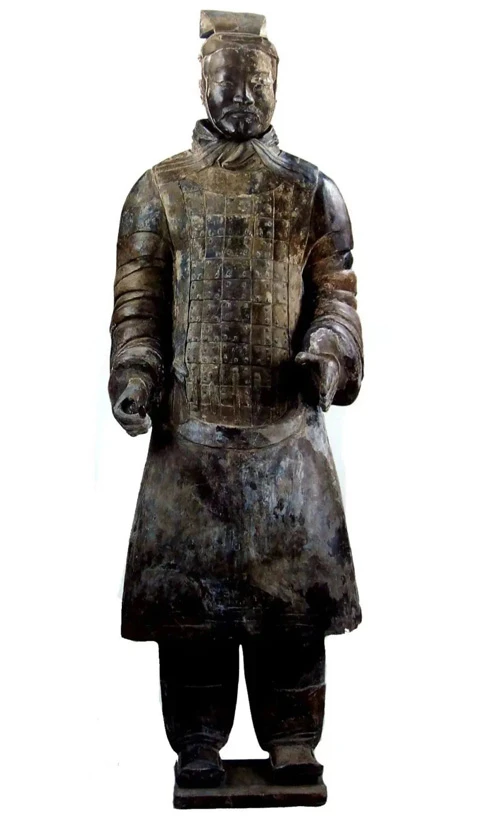
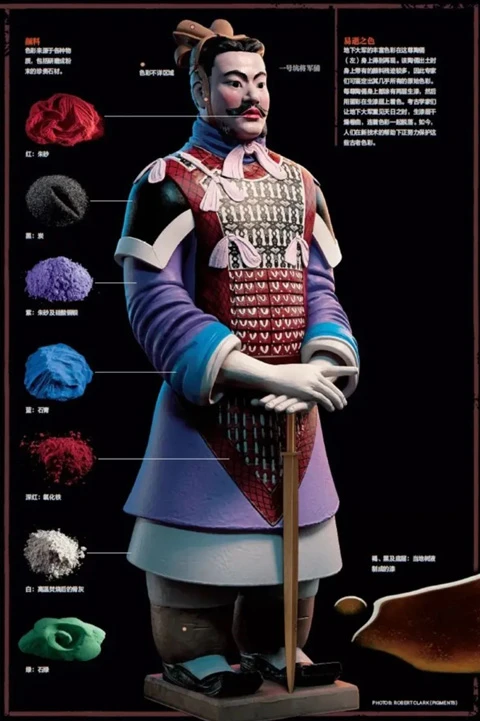
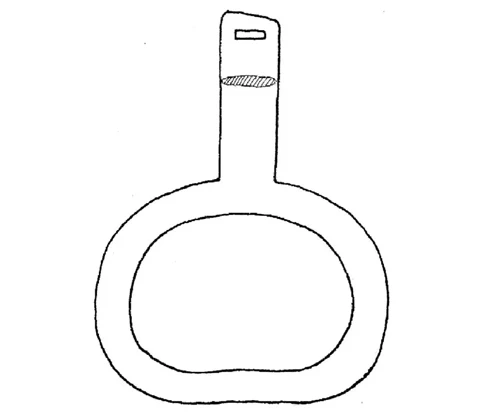
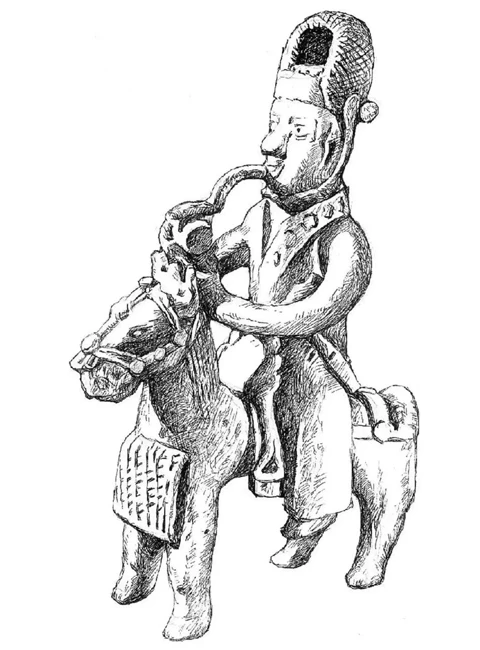

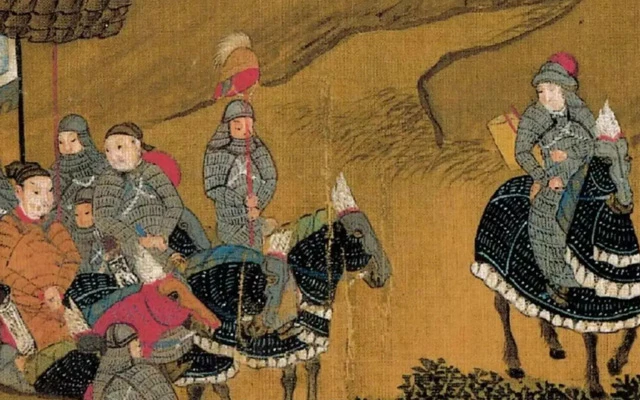
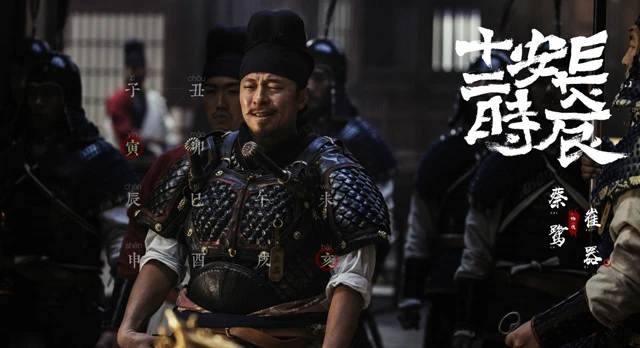
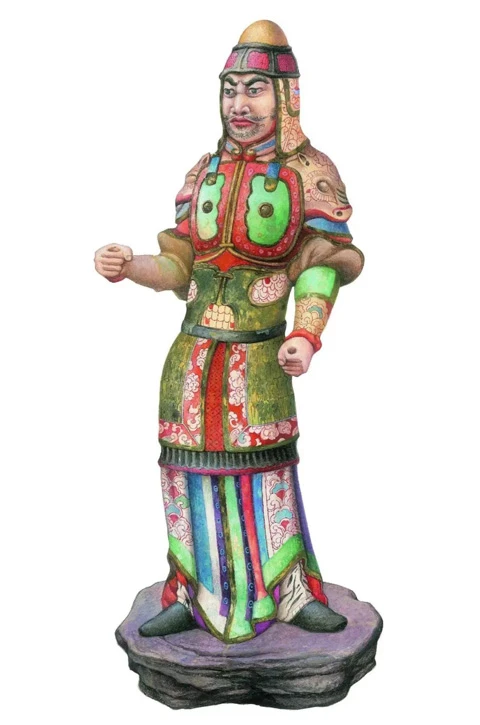
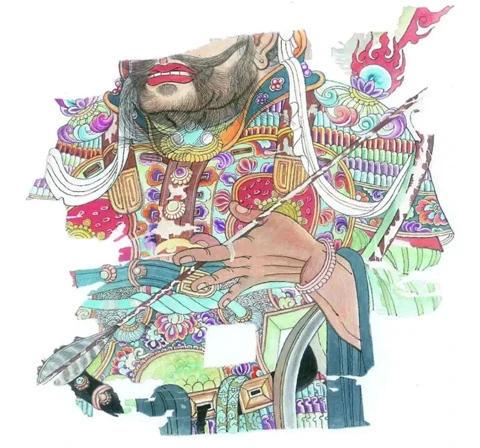

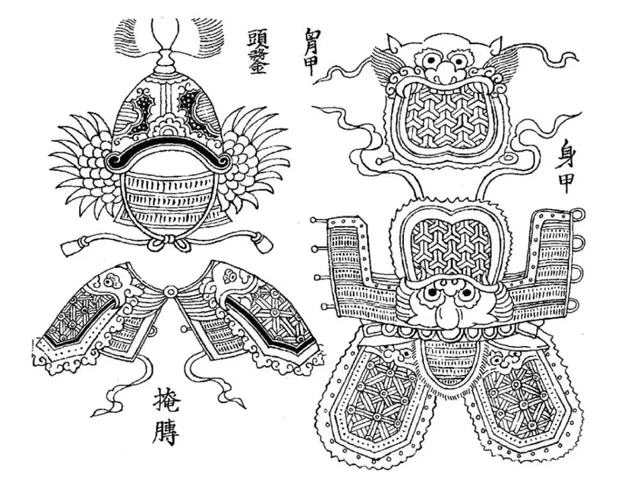
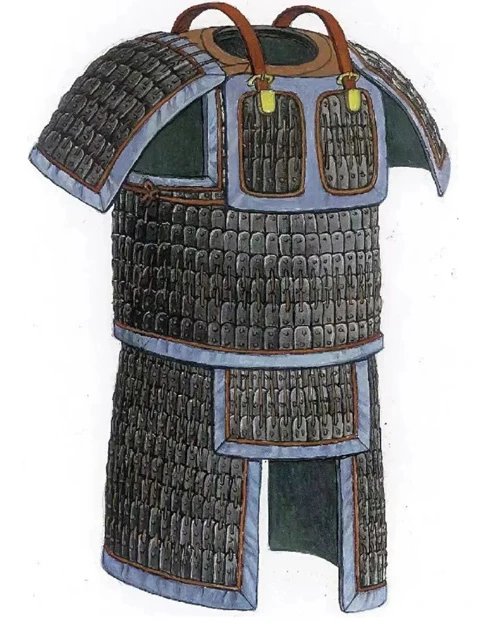

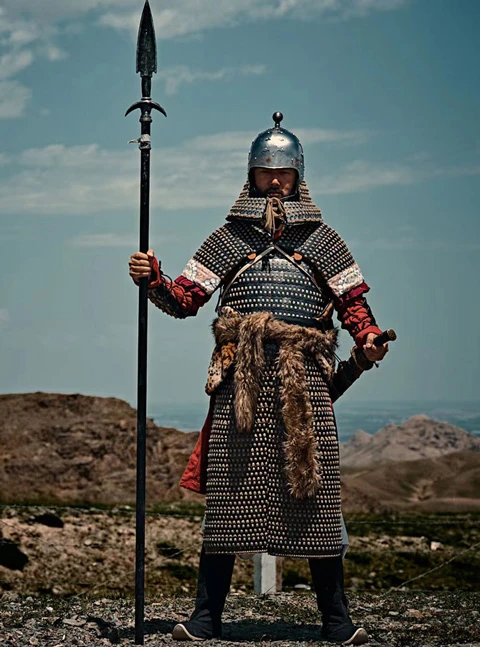
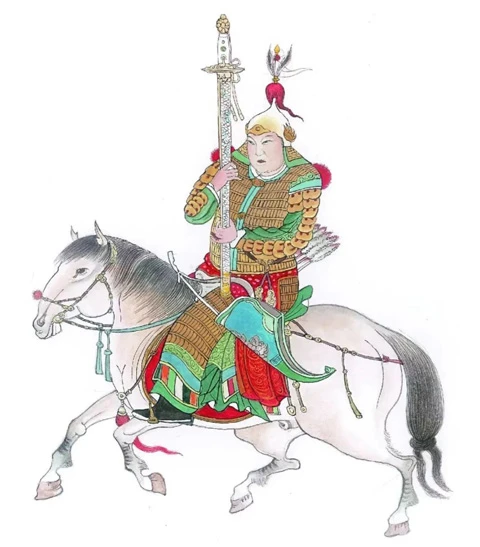

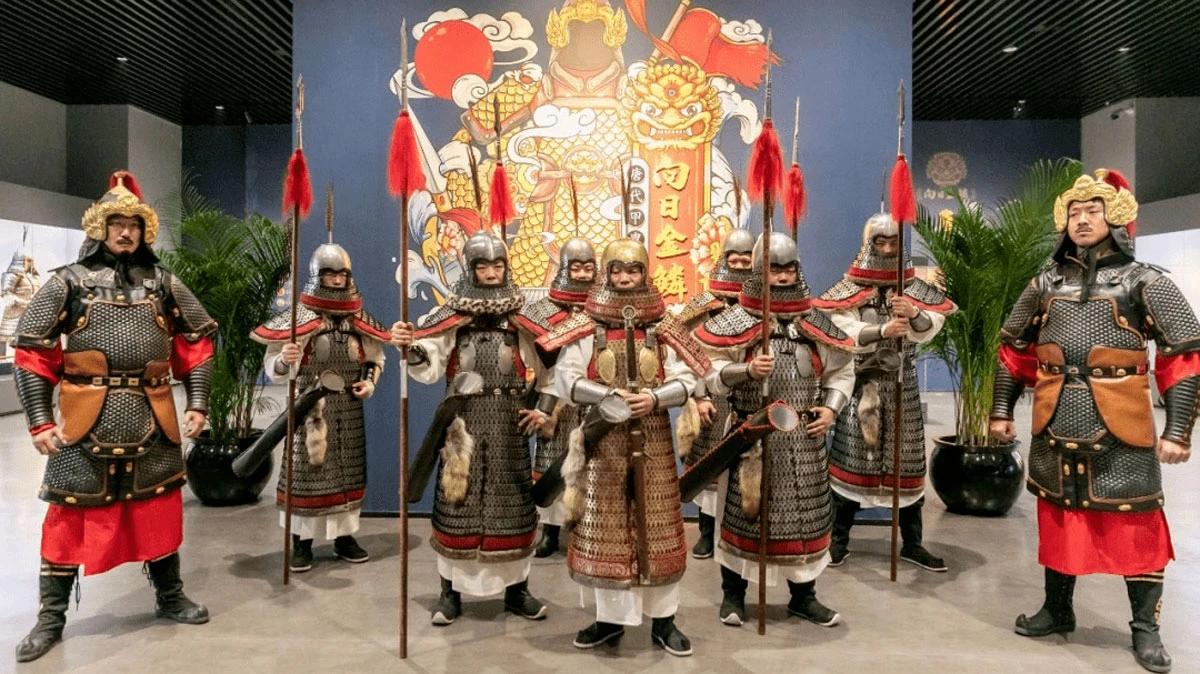
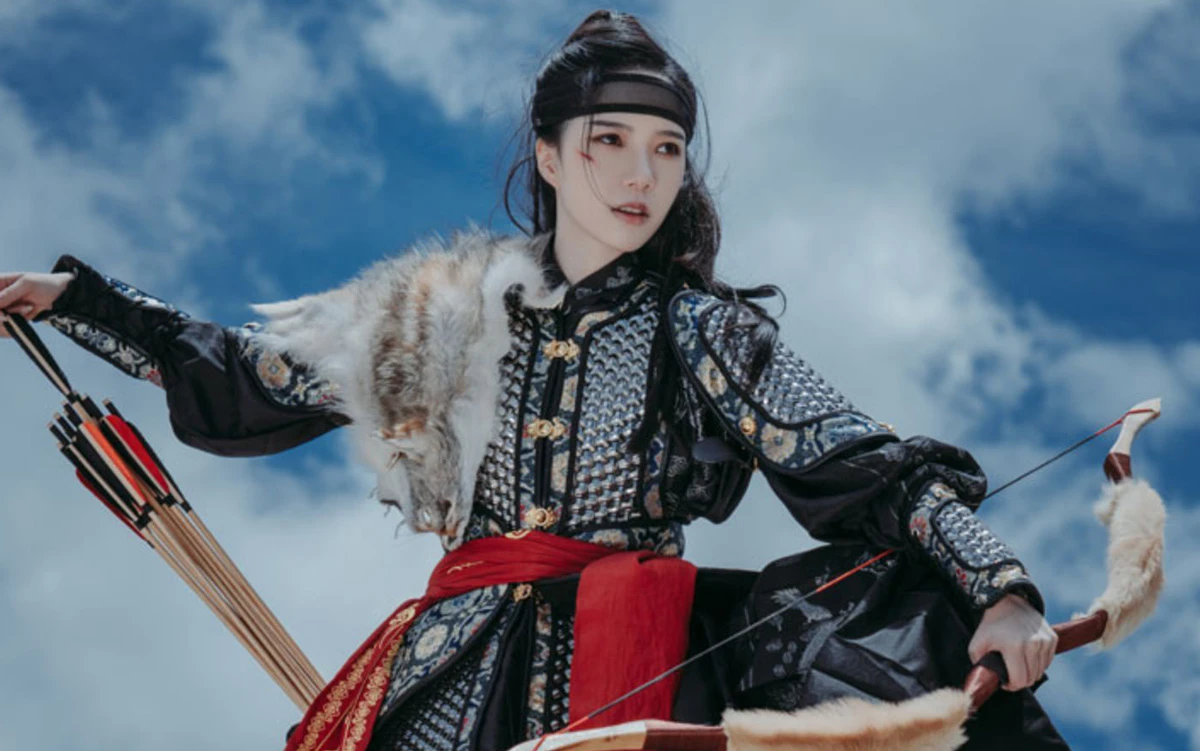
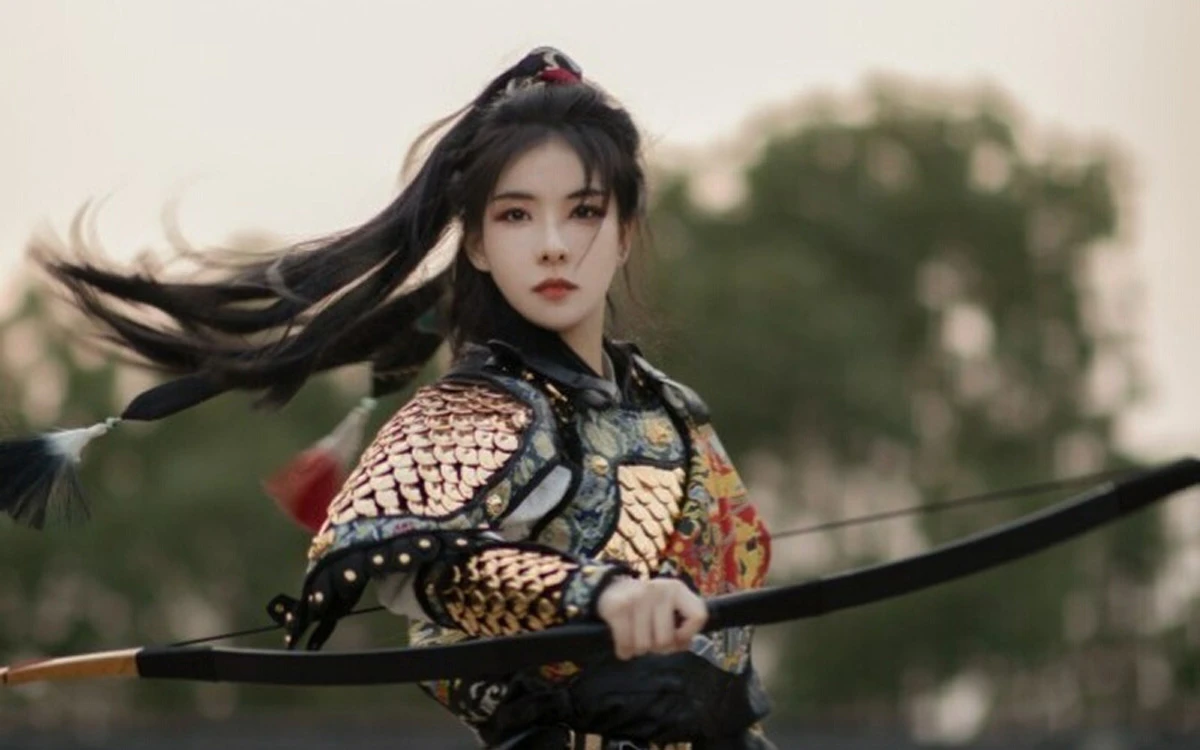

Baju armor ini terlihat unik
Terlihat gagah